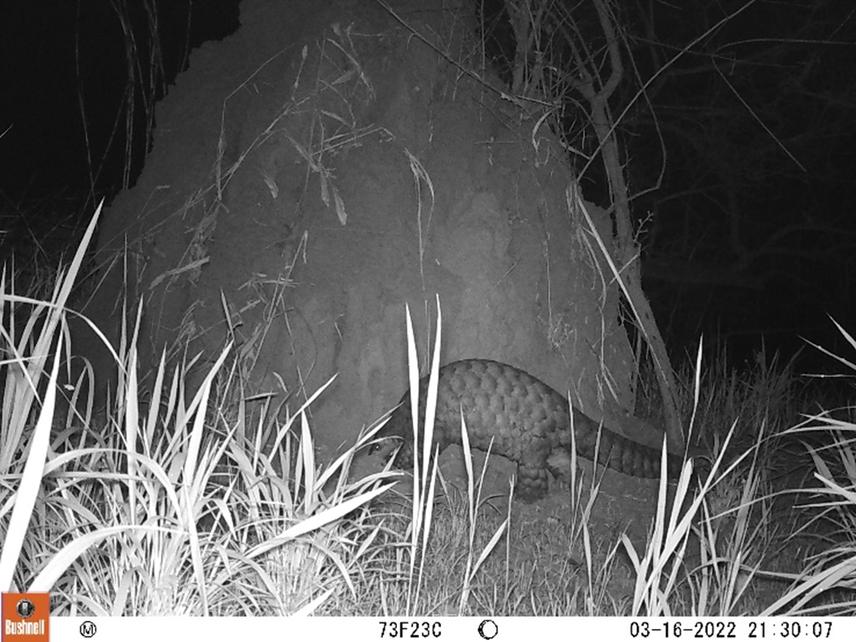Franklin Simo Talla
Other projects
31 Oct 2018
Pangolin Population Status in the Forest versus Savannah Habitat in the Mpem et Djim National Park, Cameroon
20 Aug 2024
Empowering Communities for Pangolin Conservation: Innovative Monitoring Techniques and Sustainable Practices
This project aim at improving camera-trap method used to monitor pangolin population in the wild as far as the placement strategy is concerned and test the effect of seasonality as the use of physical structures by pangolins may differ by season. More specifically we will test the optimal camera-trap location offering the best detection probability for the white-bellied pangolin monitoring and evaluate the effect of seasonality, test for the level of overlapping between giant pangolin and aardvark in their niche and infer into their cohabitation mechanism, and also promoting good attitude toward pangolin among the community using entertainment.

Giant pangolin visiting the termite mound
Pangolins remains one of the most challenging groups to detect and to study in wildlife monitoring programs. Even with advanced technic like camera trapping that has proven to be effective for other mammal groups, pangolins in general are still referred to as elusive species (Willcox et al., 2019). Many of their ecological features including low density, nocturnal and solitary lifestyle and nesting behaviour make it difficult to gather relevant information in common monitoring approaches effective for other mammals (Ingram et al., 2019). It is widely agreed that immediate action is needed to save pangolins from extinction given their unfortunate status of the world most trafficked mammals yet, conservation efforts, especially in Central Africa, are still hampered by lack of information because their secretive lifestyle and the inadequate nature of conventional survey method used for their monitoring.
Here, we test for the effectiveness of a targeted camera-traps placement strategy comparing detection frequency and associated cover land characteristic and season, to recommend an optimal protocol for the white-bellied pangolin monitoring in the wild. We also test for the level of overlapping between giant pangolin and aardvark in their niche to infer into their cohabitation mechanism. We also use a combination of entertainment and education to promote good attitude toward pangolin within the local community around our study area.